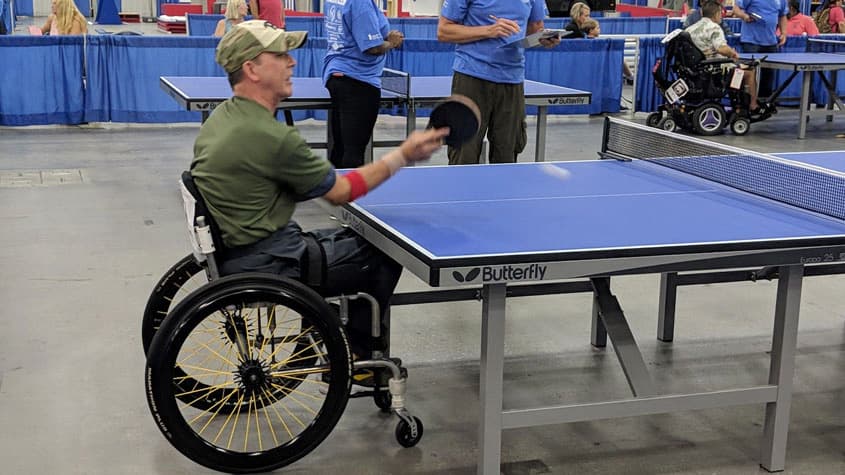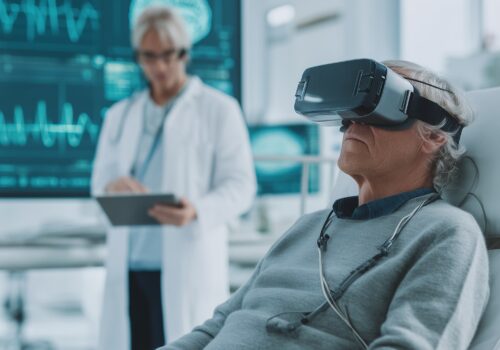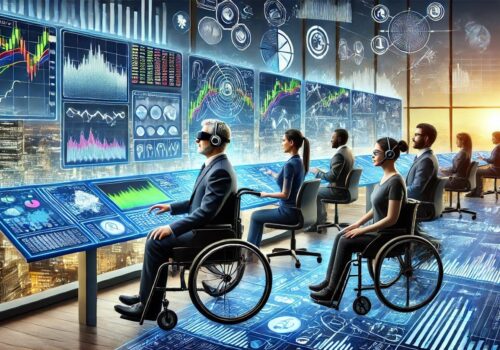Empowering Through Innovation: The Rise of Assistive Technologies for People with Disabilities
Introduction
In the contemporary age where technology holds sway in different facets of human life, there exists a burgeoning field that continually stands tall in empowering individuals with disabilities — Assistive Technologies (AT). This vast and dynamic terrain is a beacon of hope, acting as an enabler in elevating the quality of life for many.
The current landscape of assistive technologies
As we stand on the brink of a new era, it is invigorating to see a surge in assistive technologies, paving the way for a more inclusive society. These marvels of innovation are not merely tools; they are the lifelines offering enhanced mobility, communication, and a level of independence that was previously unattainable. A vast array of devices, from smart glasses aiding the visually impaired to adaptive keyboards for individuals with physical disabilities, represents this vibrant field. What makes it more encouraging is the ever-evolving nature of these technologies, adapting and growing to meet individual needs more precisely and efficiently.
The inception of empowering innovations
The journey to these groundbreaking innovations was neither smooth nor instantaneous. It has been a path paved with perseverance, ingenuity, and a deep understanding of the unique challenges faced by individuals with disabilities. Let’s take a look at some key moments that marked this journey:
- The Advent of Speech Recognition: This technology brought a paradigm shift, enabling individuals with mobility issues to control devices using voice commands.
- Augmented and Virtual Reality (AR & VR): These technologies have opened up new avenues for therapy and rehabilitation, offering immersive experiences tailored to individual needs.
- Wearable Technology: Innovations in wearable tech have been game-changers, assisting individuals in everyday tasks and enhancing their physical capabilities.
- AI and Machine Learning: The inclusion of AI in AT has made devices smarter, capable of learning and adapting to user’s needs, promising a more personalized experience.
- 3D Printing: This technology has made it possible to create customized assistive devices, bringing affordability and accessibility to the forefront.
The Pioneers in Assistive Technology
The sphere of assistive technology owes its rapid progression to the visionary pioneers who took the initiative to bridge the gap between disabilities and a self-reliant life. These trailblazers recognized the pressing need to incorporate inclusivity into the modern technological landscape. Below is a table that showcases some of the most prominent figures and entities who have left an indelible mark in this domain.
| Pioneer | Contributions | Recognition |
| Ray Kurzweil | Invented the first print-to-speech reading machine for the blind | Inducted into the National Inventors Hall of Fame |
| Vint Cerf | Co-developed the architecture of the internet, facilitating assistive technologies’ growth | Recipient of the U.S. National Medal of Technology |
| Stephen Hawking | Utilized assistive technology extensively and advocated for its development | Renowned physicist and cosmologist |
| Microsoft Corporation | Developed numerous assistive technologies, including screen readers and speech recognition software | Received various awards for inclusivity and accessibility |
| Apple Inc. | Introduced accessibility features in its products, promoting inclusivity | Acknowledged globally for its commitment to accessibility |
The cumulative efforts of these pioneers have played a pivotal role in shaping a landscape where technology serves as a tool for empowerment and inclusivity.
Companies leading the way
While pioneers laid the foundation, it is the tireless endeavors of various companies that have fueled the forward momentum in assistive technology. Giants like Google and Apple continually innovate, offering features like voice recognition and screen readers, effectively aiding individuals with different abilities. Start-ups are not far behind, bringing fresh perspectives and novel solutions to the table. The cumulative contributions of established enterprises and budding companies have engendered a fertile ground for the blossoming of assistive technologies, promising a future of infinite potential and inclusivity.
Individual innovators making a mark
In the booming arena of assistive technology, several individual innovators are rising, leaving substantial imprints through their pioneering work. Here are some individuals who have stood out:
- Haben Girma: The first deaf-blind person to graduate from Harvard Law School, she advocates for inclusivity and accessibility, utilizing technology to break barriers.
- Rupal Patel: Founder of VocaliD, an initiative that creates unique synthetic voices for those unable to speak, bringing personalized assistive solutions.
- Grace Jun: A fashion designer who integrates technology into clothing to create accessible fashion solutions for people with disabilities.
- Alexandra Rehak: As the head of Omdia’s Internet of Things (IoT) practice, she spearheads projects focusing on utilizing IoT for creating assistive solutions.
- David Hojah: Founder and CEO of Loro, a company developing a smart companion robot to assist individuals with mobility issues.
Technological Innovations Championing Accessibility
In the grand scheme of progressive societies, the role of assistive technologies cannot be underscored enough. These innovations are not just breakthroughs in the scientific realm; they stand as a testament to humanity’s relentless pursuit of inclusivity and equal opportunities for all. Here, we delve deep into some of the remarkable developments that are championing accessibility:
- Smart Home Devices: These ensure a safe and convenient living environment for people with disabilities, with features like voice control and automated systems.
- Exoskeletons: Worn externally, they assist individuals with mobility issues, helping them walk or lift objects with ease.
- Adaptive Computer Access: From eye-tracking technology to adaptive keyboards, these innovations make it possible for everyone to use computers efficiently.
- Hearing Aids with AI: Leveraging AI to filter and enhance sound quality, providing a superior auditory experience for individuals with hearing impairments.
- Accessible Gaming: Innovations like adaptive controllers are ensuring that gaming is inclusive, offering a fantastic recreational avenue for all.
Pioneering breakthroughs in hardware and software domains are continually broadening the horizons, offering unprecedented levels of accessibility and fostering a society where everyone can thrive.
Breakthrough devices and tools
Technological advancements have birthed a series of devices and tools that are now rewriting the narrative for individuals with disabilities, empowering them to lead more independent and fulfilling lives. These groundbreaking creations range from simple aids to sophisticated devices that integrate seamlessly into everyday life, promising not just functionality but a considerable enhancement in the quality of life.
Software advancements
In the dynamic landscape of assistive technologies, software advancements stand as pivotal drivers, offering solutions that are both innovative and inclusive. Some notable advancements include:
- Speech-to-Text Software: Providing individuals with hearing impairments an alternative way to communicate and perceive information.
- Screen Readers: Enabling visually impaired individuals to access content available on screen through auditory feedback.
- AI Assistants: Leveraging artificial intelligence to offer personalized help, adapting to individual needs and preferences.
- Virtual Reality Therapy: Offering therapeutic solutions through virtual reality, aiding in rehabilitation and improving mental health.
- Learning Management Systems (LMS): Tailored educational platforms offering personalized learning experiences, thus fostering inclusive education.
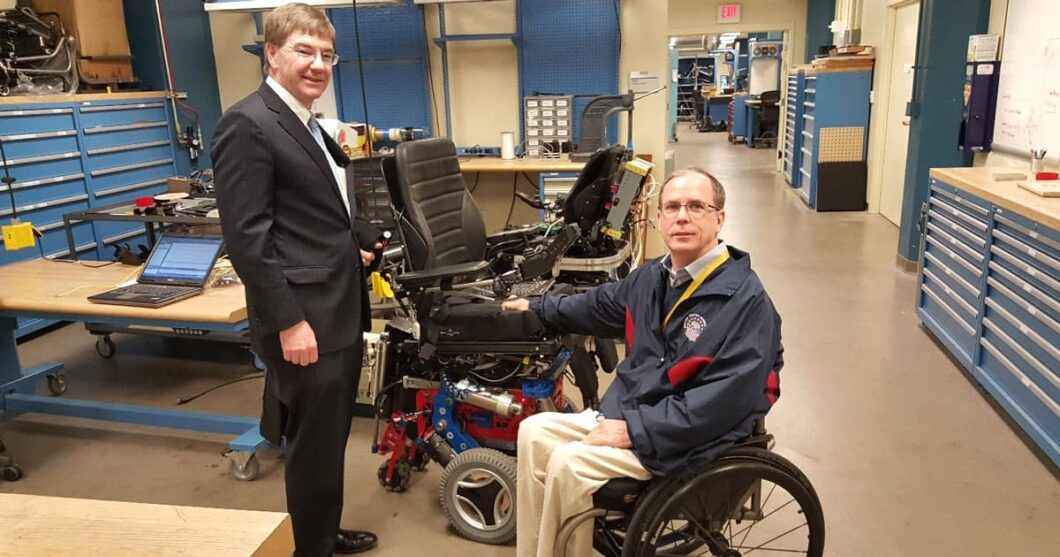
Real-Life Stories: Transforming Lives through Technology
Behind the hard facts and the cutting-edge inventions are real people whose lives have been fundamentally transformed through assistive technologies. These narratives are not just testimonials but a vibrant tapestry of hope, resilience, and the incredible triumph of the human spirit. Let us look at some inspirational stories from around the globe that paint a picture of the empowering transformation brought about by technology:
| Name | Story | Impact |
| Michael Phillips | Diagnosed with spinal muscular atrophy, he started using computer technology at an early age, eventually becoming a successful graphic designer. | Showcased the potential of assistive technology in nurturing talents. |
| Christine Ha | Despite being visually impaired, she won the third season of MasterChef, thanks to adaptive technologies in the kitchen. | Became an inspiring figure demonstrating that disability is not a barrier to achieving one’s dreams. |
| Alex Brooker | A journalist and presenter, Alex has utilized prosthetic limbs and mobility aids to carve out a successful career in the media. | A living testimony to the fact that with the right aids, individuals can reach the pinnacle of success in their chosen field. |
| Jessica Cox | Born without arms, she learned to fly a plane using her feet, aided by adaptive technology. | Set a Guinness World Record, embodying the spirit of breaking barriers through determination and technology. |
These real-life stories illustrate the transformative power of technology, spotlighting the revolution that is underway in the lives of countless individuals globally.
Personal narratives
In addition to the luminous stories of individuals breaking barriers, we find an abundance of personal narratives that further enrich the fabric of this collective journey towards a more inclusive future. Through blogs, podcasts, and social media platforms, numerous individuals share their day-to-day experiences, giving a voice to the transformative power of assistive technologies. These stories, woven from personal experiences, resonate deeply, offering both inspiration and a clear testament to the revolutionary impact of technology in the lives of people with disabilities.
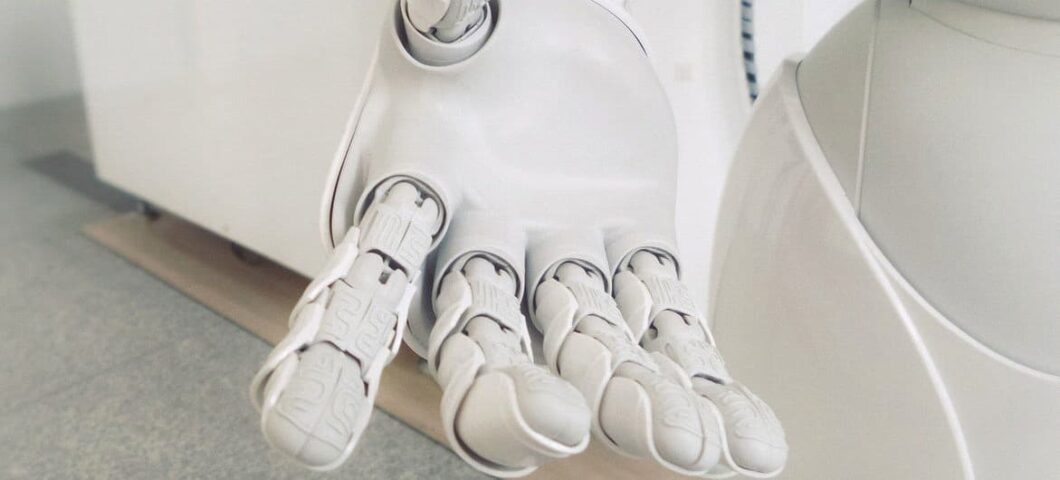
Community stories
In a closer look at community narratives, we find groups and organizations sharing stories that represent a broader spectrum of experiences and triumphs. These stories encapsulate the essence of community spirit, showcasing how assistive technologies have fostered inclusivity and transformed lives. Here, we find an array of tales that speak volumes about the community’s journey:
| Community/Organization | Story | Impact |
| Beit Issie Shapiro | An Israeli organization that has been pioneering in developing various technological solutions for people with disabilities. | Created a ripple effect globally, influencing policies and changing lives through innovative solutions. |
| Friendship Circle | A community that shares stories of individuals utilizing technology to overcome challenges. | A hub of inspiration, offering a platform for individuals to share their success stories and foster a sense of community. |
| The AbilityNet | A UK-based charity helping people of any age and with any disability to use technology to achieve their goals. | Has been a pillar in the community, offering support, resources, and fostering a tech-inclusive environment. |
| SpecialEffect | A UK charity leveraging technology to help people with physical disabilities to play video games. | Transformed recreational avenues for individuals with disabilities, ensuring that everyone can enjoy gaming. |
Global Impact: Assistive Technologies in Developing Regions
As we venture farther into the global realm, it becomes imperative to gauge the reach and impact of assistive technologies in developing regions. The vast expanses of these areas host a plethora of cultures, demands, and financial constraints, yet, amidst these varying parameters, a common thread of empowerment and innovation through technology is steadily gaining ground.
Adoption and adaptation in different regions
Diving into the global landscape, one observes varying degrees of adoption and adaptation of assistive technologies in different regions. Let’s delve deeper into how different areas are embracing this transformative wave:
- Latin America: In countries like Brazil and Argentina, there is a growing acknowledgment of the potential of assistive technologies, seen through government initiatives and the rise of tech startups focusing on inclusivity.
- Africa: Despite financial constraints, nations such as Kenya and South Africa are pioneering in implementing mobile technology to enhance education and healthcare services for individuals with disabilities.
- Asia: Nations like Japan and South Korea are ahead in the tech curve, developing futuristic assistive devices that are paving the way for a more inclusive society.
- Middle East: Leveraging its robust economic framework, regions like the UAE are investing in state-of-the-art facilities, nurturing a culture of innovation and inclusivity.
- Eastern Europe: Countries including Poland and Czech Republic are gradually embracing assistive technologies, spurred by EU directives and the collective endeavor to foster an inclusive society.
With each region portraying a unique journey, the global tapestry of adoption and adaptation signifies a universal movement towards a society emboldened by technology, where no one is left behind.
Success stories from around the world
As we cast a global net to bring in success stories from diverse corners of the earth, we encounter narratives rich with inspiration and courage. These stories, coming from individuals or communities in developing regions, not only highlight the triumph of the human spirit but also underscore the vital role of technology in transforming lives. From a young entrepreneur in India creating affordable prosthetics to a community initiative in Ghana ensuring accessible education for all children, the stories are many and varied. They build a compelling case for the potent synergy of human ingenuity and technological innovation, offering a beacon of hope and painting a canvas rich with tales of victory against all odds. Through this lens, we witness the true essence of empowerment through innovation, marking the rise of a new dawn where technology is not just a tool but a bridge to a world brimming with opportunities and equality.
Conclusion
As we draw to a close in our exploration of the empowering journey of assistive technologies, it is impossible not to feel a deep sense of optimism and wonder. The narratives of individual triumphs, community successes, and global impacts carve a path of hope, showcasing the monumental changes unfolding in the lives of people with disabilities. Through the lens of technological advancement, we perceive a world that is gradually moving towards inclusivity, equality, and empowerment for all.
The road ahead for assistive technologies
Looking forward, there is an endless horizon of possibilities for assistive technologies. Here, we foresee some of the potential developments that could further revolutionize this field:
- Artificial Intelligence (AI): AI holds the promise to create even more personalized and intuitive assistive tools, making daily life easier and more accessible for individuals with disabilities.
- Augmented Reality (AR) and Virtual Reality (VR): These technologies offer a platform for creating immersive and adaptive learning experiences, pushing the boundaries of what is achievable.
- Internet of Things (IoT): IoT can foster seamless integration between various devices, promoting a holistic and connected environment that enhances the quality of life.
- 3D Printing: This technology can potentially democratize the production of assistive devices, making them more affordable and accessible to a larger segment of the population.
- Policy and Legislation: Beyond technology, nurturing a legal framework that supports innovation and inclusivity will be pivotal in steering the direction of assistive technologies.
Each point on this roadmap is a beacon of potential, signalling avenues of growth, innovation, and enrichment. The road ahead is indeed promising, with the harmonious marriage of technology and human endeavor fostering a world where every individual can thrive, breaking barriers and fostering a society that celebrates diversity and inclusivity.
